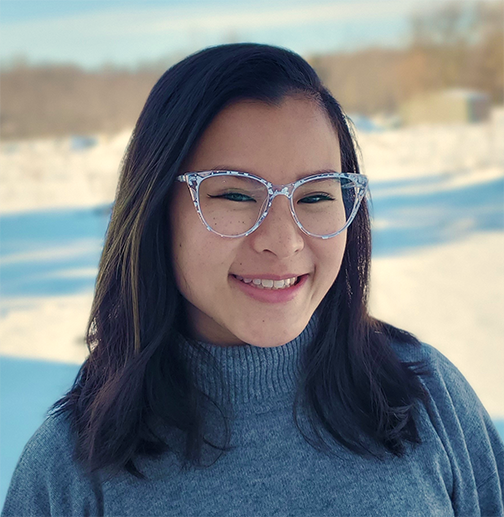
 back to all news
back to all news
Meet the future of Landscape Architecture: Audeline Kurniawan (MLA/MS ’22)


U-M School for Environment and Sustainability (SEAS) master’s student Audeline Kurniawan (MLA/MS ’22) loved the interdisciplinary nature of her undergraduate studies at the University of Alabama at Birmingham. She dual-majored in biology and psychology and worked in an evolutionary ecology lab, where she did research on an invasive anole lizard species and its ability to adapt to urban settings and urban heat island effect. So formative was the experience that Kurniawan “knew I had to be outside and hands-on with whatever field I chose to continue in.”
The SEAS Master of Landscape Architecture (MLA) program, with its focus on ecological design and cross-disciplinary learning, proved to be the right fit for Kurniawan. “It melded all my interests together, including my love for nature, human behavior and psychology, and creativity,” she said. “Pulling all these disparate pieces together to make beautiful, functional, resilient ecological designs for landscape interventions has really become a main focus for me.”
Kurniawan graduated with an MLA degree, as well as a Master of Science degree with a specialization in Ecosystem Science and Management, from SEAS at the end of April.
Hands-on, practical work
Courses such as Ecological Planting Design with Associate Professor MaryCarol Hunter, Fluvial Ecosystems with Professor Paul Seelbach, Herbaceous Plants and Ecosystems with Lecturer Michael Kost, and her first studio course with Professor Emeritus Bob (Robert) Grese gave Kurniawan strong foundational skills in ecological design, while her master’s practicum with the Bird Center of Michigan gave her the opportunity to do hands-on, practical work for a real-world client.
“It was the perfect project to be able to put our knowledge to good use,” said Kurniawan about the Bird Center, which had acquired 2.5 acres of land in Saline, Michigan. “They were looking to naturalize it to better support local flora and fauna, especially native bird species that were being released from the center after successful rehabilitation.”
Kurniawan and fellow SEAS student Ashley Truitt (MLA ’22) created a design for the front and back yards and implemented more than 550 native perennials, shrubs, and trees in August and October 2021. They also created a final master plan that includes recommendations for a rain garden at the north end of the site, as well as a maintenance plan and educational signage to label specific species and to explain the importance of native plants in local ecosystems.
A community of peers
Community-wise, SEAS proved to be a supportive one for Kurniawan that was filled with peers who are passionate about their lives and studies. “SEAS is full of such amazing, intelligent, and diverse people, so I have really enjoyed being surrounded by folks who also care about what I care about,” she said. Kurniawan admitted it was challenging at times to complete graduate school during a pandemic, but she found camaraderie in a new student organization she established—Minorities in Agriculture, Natural Resources, and Related Sciences, or MANRRS—which helped her get through some “tough pandemic days” and allowed her to foster lifelong friendships.
SEAS faculty also were supportive, Kurniawan noted, including Associate Professor Stan Jones, “who has become quite a father figure in the MLA program.”
Looking ahead to the future
Kurniawan said she is looking forward to putting into practice all that she learned at SEAS, and is leaving the school with some key takeaways. “Truly listening and understanding perspectives other than your own will get you so much further than assuming you’re right about everything,” Kurniawan said. “Also, be passionate about adapting to the challenges the world will throw at us. Silence isn't really an option anymore, and overcoming shyness and trepidation is so important if we are going to make positive changes for the future.”
After graduation, Kurniawan will head to sunny California, where she will join an ecological consulting firm in its landscape architecture department. The firm’s services include ecological assessments, research, and habitat restoration—work that will be outside and hands-on, just as Kurniawan had wanted.

